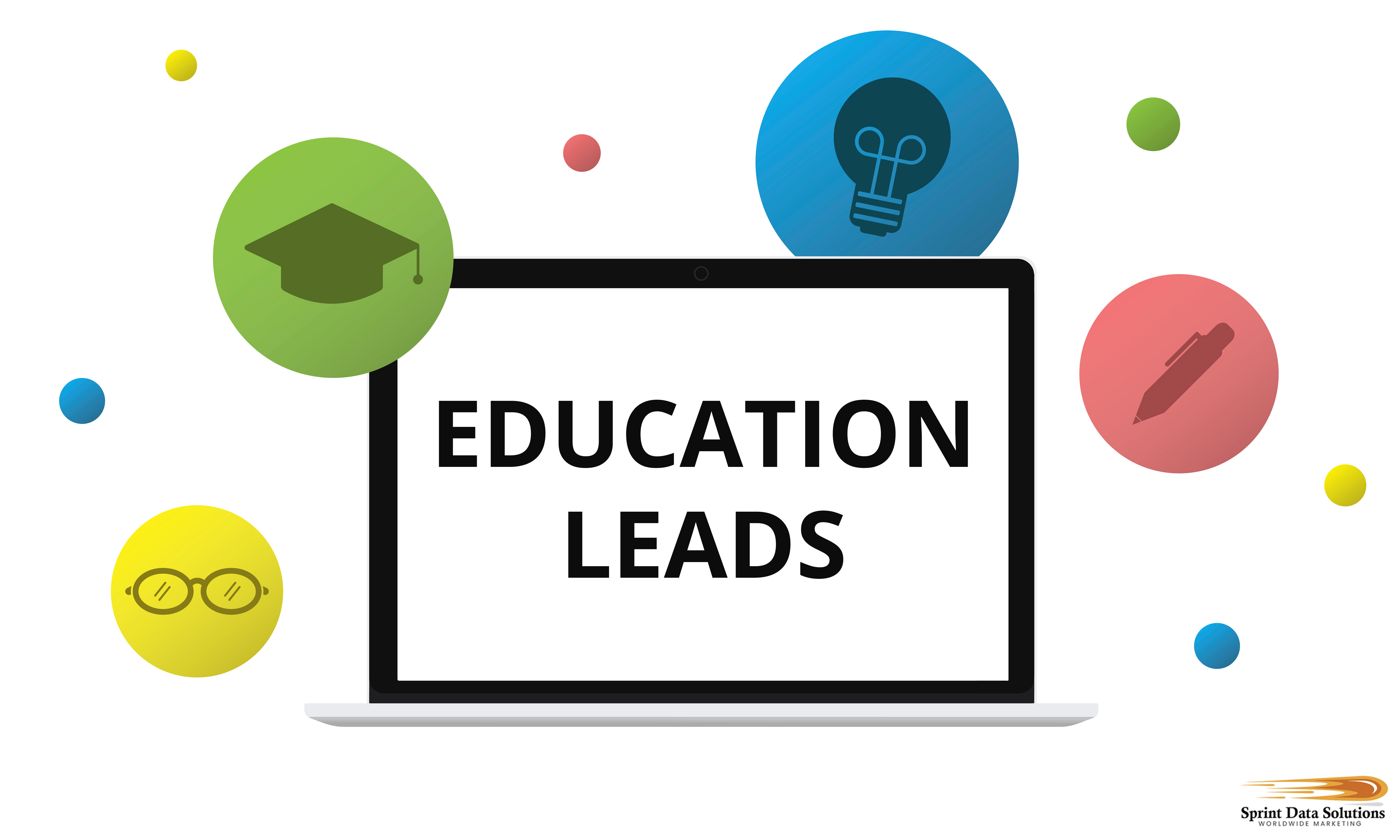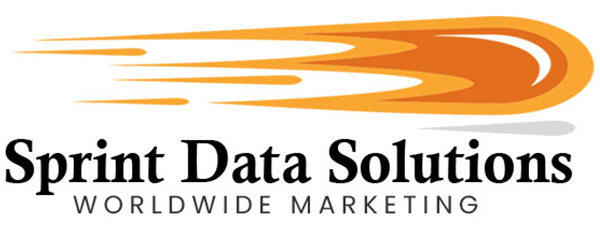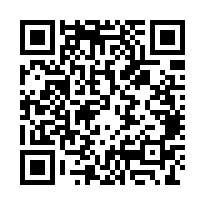Students Are A Growing Marketing Demographic If You Can Reach Them
Education stands as one of the most vital pillars of a civilized and progressive society, despite the reluctance with which many younger children may approach it. It is far more than a routine obligation or a rite of passage—education is the structured transmission of accumulated human knowledge, experience, and critical thinking across generations. At its core, education ensures the survival and advancement of culture, science, ethics, and innovation. Without it, humanity would stagnate: diseases would remain incurable, scientific discoveries would never reach their potential, and modern marvels such as artificial intelligence, space exploration, and renewable energy technologies would remain the stuff of imagination. Historical advancements, from the printing press to the microchip, all stem from the deep reservoirs of knowledge cultivated through education systems. The classrooms, often dismissed by the young as dull or confining, are in fact the very laboratories where future scientists, engineers, doctors, artists, and leaders are shaped.
Yet, the path of education is not without challenges. It demands discipline, patience, and a long-term vision—traits that may not yet be fully developed in younger students. Nevertheless, the absence of formal education can significantly limit one’s opportunities in an increasingly competitive and knowledge-driven world. In today’s global economy, success often hinges on one’s ability to acquire and apply specialized knowledge—whether it’s a physician diagnosing a complex illness, a coder developing software to power smart devices, or a skilled technician installing sustainable plumbing systems in eco-friendly buildings. Vocational training, technical expertise, and academic scholarship all contribute to a multifaceted educational ecosystem that fuels national progress. Ultimately, education is not just about individual success; it is the collective investment of a society in its own future, ensuring that the achievements of today become the stepping stones for tomorrow’s breakthroughs.

The Challenges
The landscape of education in the United States is experiencing a sweeping transformation, mirroring the rapid changes in technology, the economy, and societal expectations. For much of the 20th century, a college degree was widely seen as the definitive key to upward mobility and economic security—a linear and trusted path: complete high school, earn a bachelor’s degree from a reputable university, and transition into a stable, well-paying career. This model was built on the premise of industrial-era job markets, where higher education credentials served as a reliable proxy for job readiness and social status. However, the 21st century has disrupted this paradigm. The rise of automation, digital innovation, and global competition has drastically altered the workforce, demanding not only specialized knowledge but also adaptability, problem-solving, and continuous skill development.In today’s complex and fast-evolving environment, traditional academic degrees are no longer the sole, or even primary, indicators of future success. Employers are placing increasing value on demonstrated competencies, real-world experience, and specialized certifications that reflect up-to-date, job-relevant skills. As a result, alternative educational pathways—such as vocational training, apprenticeships, bootcamps, and online credentialing platforms—are gaining legitimacy and popularity. These models offer greater flexibility, affordability, and relevance for a generation of learners who must prepare for careers that may not yet exist, in industries that are rapidly shifting. The modern student is now faced with a multifaceted landscape of opportunities that challenge the once-unquestioned supremacy of a four-year degree and require a more strategic, personalized approach to education and career planning.
While higher education continues to play a critical role in professions such as medicine, law, and scientific research, there has been a significant cultural and economic shift toward valuing trades and technical skills. Fields like plumbing, electrical work, HVAC systems, media production, computer programming, cybersecurity, and advanced manufacturing are experiencing a strong resurgence. This is driven by several factors, including growing labor shortages, the retirement of skilled workers, and the accelerating pace of technological change. These careers not only provide essential services but also offer lucrative salaries, robust demand across sectors, and pathways to financial stability—often without the burden of student debt or the time investment required by a traditional four-year degree.
In today’s economy, employers increasingly prioritize hands-on experience and job-ready competencies over academic credentials. As automation and digitalization reshape entire industries, many traditional college programs struggle to keep pace with evolving workforce needs. In response, alternative education models such as apprenticeships, technical certifications, coding boot camps, and on-the-job training programs have emerged as efficient, targeted avenues for career preparation. These options are often more adaptable, affordable, and closely aligned with real-world applications, allowing individuals to upskill quickly and respond to labor market demands with agility.
This realignment signifies more than just a shift in hiring practices—it marks a cultural reevaluation of what constitutes success and prestige. As the barriers to entry in high-paying, stable careers diminish, there is a growing appreciation for the practical knowledge and innovation that skilled tradespeople and technical professionals bring to the modern economy. Rather than viewing higher education as the default path, society is increasingly recognizing the value of diverse learning models that emphasize effectiveness, efficiency, and real-world impact.
Despite the promise of higher education as a pathway to prosperity, its accessibility remains obstructed by one of the most persistent and deepening challenges of our era: affordability. Today’s students face a financial landscape that is far more daunting than that navigated by earlier generations. Where Baby Boomers or even Gen Xers might have paid a few hundred dollars per semester—often manageable through part-time jobs or modest savings—contemporary students are frequently confronted with annual tuition and associated costs that rival the price of a new car or even a down payment on a house. Over the past few decades, college tuition has outpaced inflation, housing, and healthcare in cost growth, driven by shrinking state funding, administrative bloat, and increasing demand. Simultaneously, wage growth has remained relatively stagnant, and the labor market has become more competitive, often requiring not just a bachelor’s degree, but advanced credentials to stay relevant. The net result is that many young people are assuming student loan burdens that can take decades to repay—not to finance luxury, but to gain access to what is still perceived as the minimal credential for economic survival. In this context, the rising cost of education is not merely a personal hardship; it represents a systemic barrier that may contribute to the first generational decline in economic security in modern American history.
The growing disconnect between older generational assumptions and the current experiences of students presents a significant obstacle to meaningful education reform. Many policymakers and stakeholders who completed their studies decades ago may fail to recognize the extent to which the higher education landscape has transformed. Today’s students navigate an increasingly intricate web of financial aid systems, with loans, grants, and work-study options often buried under layers of bureaucracy. College admissions have become more selective, demanding higher academic and extracurricular achievements, while the promised economic benefits of a degree are no longer guaranteed. Simultaneously, tuition and associated costs have soared, yet these increases often fail to correspond with improvements in educational quality, career preparedness, or technological integration. As the job market becomes more fluid and digital skills more vital, many institutions are struggling to adapt quickly enough to remain relevant and effective in preparing students for the future.
In today’s rapidly evolving world, students must adopt a more strategic approach to education and career planning than ever before. Success is no longer confined to traditional academic paths or a four-year college degree. Instead, it increasingly depends on a student’s ability to think critically, adapt swiftly to change, and pursue lifelong learning across diverse environments. With technological disruption, automation, and global interconnectedness reshaping the workforce, skills like emotional intelligence, digital literacy, and entrepreneurial thinking are becoming just as important as formal qualifications. Families, educators, and policymakers must champion a more inclusive and flexible educational ecosystem—one that values vocational training, apprenticeships, online learning, and other alternative pathways. By prioritizing affordability, relevance, and real-world skills, we can empower the next generation to not just navigate uncertainty, but to seize the opportunities it presents and lead with resilience, creativity, and confidence.
The Marketing Opportunities
As complex and demanding as the educational landscape has become for young Americans today, one constant remains: this stage of life represents a pivotal transition into personal independence. Even during high school, some students—especially those with generous allowances or part-time jobs—begin to explore a degree of financial autonomy. This often manifests in their ability to purchase products or subscribe to services without direct parental involvement. They are learning to make consumer decisions that reflect their personal preferences and priorities.
The shift becomes significantly more pronounced at the collegiate or tertiary education level, where independence is no longer just a concept but a legal and practical reality. For many young adults, this is the first time they will assume full responsibility for their financial lives. They may apply for and manage student loans, open their first checking accounts or credit cards, and begin to budget for living expenses such as housing, food, transportation, and textbooks. While parental advice may still play a role, these students are now legal adults—fully empowered to enter into binding financial agreements, sign contracts, and navigate both opportunities and obligations with limited oversight.
This transitional phase represents a critical moment for marketers and service providers, particularly those whose offerings align with the immediate needs and aspirations of this demographic. Products and services that prioritize education, financial literacy, and student well-being tend to resonate most deeply. Recognizing this, Sprint Data Solutions Worldwide Marketing maintains a comprehensive and highly targeted database of students segmented by various criteria, including age, educational level, field of study, geographic location, and specific consumer needs. This enables precision marketing efforts tailored to the evolving demands of young Americans embarking on their journey of adulthood and financial independence.
Educational Seekers
The largest segment of the educational demographic is comprised of individuals pursuing formal education, a broad group that includes a diverse array of learners with varying goals. This population can be further subdivided into more specific categories, such as those aiming for university degrees—whether undergraduate or postgraduate—or those focused on vocational, technical, or trade certifications. Despite the variety in educational paths, the common thread uniting these individuals is a desire for structured instruction that culminates in a recognized credential, signifying their proficiency and readiness in a particular discipline or industry. The spectrum of learners spans a wide age range, from teenagers enrolling in post-secondary institutions for the first time to mid-career professionals pursuing graduate-level qualifications. It also includes older adults seeking to re-enter the academic world, perhaps to pivot careers, fulfill long-deferred personal ambitions, or remain competitive in a rapidly evolving job market. This vast and dynamic group reflects the enduring societal value placed on education as a pathway to personal growth, economic opportunity, and professional advancement.
Student Financial Assistance Seekers
In the past, post-secondary education was significantly more affordable, allowing many students to fund their tuition and living expenses through part-time or summer employment, or through modest savings set aside by their parents. A few months of work during the summer could be enough to pay for an entire year of tuition, and in some cases, parents could cover all educational costs without needing to borrow. However, the current economic reality has shifted considerably. Tuition fees have escalated far beyond the pace of inflation, and additional expenses—such as textbooks, housing, transportation, and technology—have also surged. As a result, most students today, aside from those from high-income families, must rely heavily on external financial support to pursue higher education.
This increasing financial burden has made student loans a central component of funding a college or university education. In addition to government-backed loan programs, private lenders now offer tailored financial products to address the diverse needs of today’s student population. For example, international students may require loans that do not demand a co-signer, while part-time students or those enrolled in vocational training may need flexible repayment options or income-based repayment plans. Beyond tuition, students also need to budget for essential living costs such as food, clothing, utilities, and health care. Consequently, financial planning tools, budgeting apps, and student-specific banking products—like low-fee accounts or cashback credit cards geared toward groceries and public transport—are becoming increasingly relevant.
As financial pressures continue to rise, a holistic approach to student financial aid is essential. This includes not just loans and grants, but also scholarships, work-study programs, and education on personal finance management. With the right mix of support and information, students can better manage their finances and focus on academic success without being overwhelmed by debt or basic cost-of-living concerns.

Online Class Seekers
The rise of online remote learning, initially driven by the global pandemic to ensure public health and safety, has since evolved into a transformative educational model that offers unprecedented flexibility and access. This shift has proven especially beneficial for individuals who balance full-time jobs or reside in geographically isolated areas where access to traditional educational institutions is limited. For working professionals, the convenience of learning outside regular business hours means they can upskill or pivot careers without sacrificing their income or daily responsibilities. Similarly, for students in rural or underserved regions, online learning circumvents the prohibitive costs associated with relocation, such as housing, transportation, and living expenses, thus democratizing education.
The scope of online learning is extensive, encompassing academic degrees, vocational training, certification programs, and professional development courses. This broad range appeals to a diverse demographic, including high school graduates seeking affordable alternatives, mid-career professionals looking to advance, and lifelong learners pursuing personal interests. Consequently, there is a growing market for complementary products and services. High-quality headsets, microphones, webcams, and noise-cancelling speakers enhance the virtual classroom experience. Additionally, investments in digital security tools—such as VPNs, encrypted storage, and multi-factor authentication apps—are increasingly important to protect personal data and intellectual property in online environments. As remote learning continues to expand and evolve, supporting industries that cater to the technical and logistical needs of virtual learners are poised for parallel growth.
Trade School Financial Assistance
It’s not just traditional universities that come with a hefty price tag anymore. Increasingly, trade schools and technical colleges—which focus on practical, hands-on training rather than academic degrees—are demanding significant financial investment from students. These institutions often offer specialized certifications in high-demand fields such as plumbing, HVAC, electrical work, or medical technology. Despite not offering degree programs, the cost of attendance can still be steep due to the intensive, skill-based nature of the training and the cost of equipment or materials. Ironically, many students turn to trade schools precisely because they hope to avoid the financial burden of a four-year university, only to find that financing vocational education presents its own challenges. This is especially true for lower-income students, who make up a large portion of the trade school demographic. As a result, access to financial aid, scholarships, and comprehensive support services—such as budgeting assistance, career counseling, and time management programs—is not just helpful but often essential to student success in these environments. Without such support, many talented individuals may be deterred from pursuing careers in trades that are increasingly crucial yet underfilled in today’s labor market.
Student Debt Leads
In the 21st century, student loan debt has become a defining challenge for many college graduates, often amounting to tens of thousands of dollars and lingering well into adulthood. This financial burden can significantly delay or even derail milestones such as purchasing a car, buying a first home, or saving for retirement—milestones that previous generations often achieved earlier in life. To ensure that young professionals can fully participate in and contribute to the economy, managing and reducing student debt must be treated as an urgent priority. Fortunately, today’s students are increasingly proactive about seeking financial tools and resources. Services like loan refinancing, income-driven repayment plans, and credit counseling are commonly explored. In addition, products and platforms that promote smart budgeting—ranging from discounted travel options and secondhand shopping platforms to digital budgeting apps and affordable meal solutions—are playing a critical role in helping students and recent graduates stay financially afloat. Holistic financial wellness education, combined with access to supportive services, can empower the next generation to move beyond debt and toward financial independence.
Student Continuing Education Seekers
For many individuals, pursuing a formal education was once a cherished dream, set aside to prioritize responsibilities like raising children or maintaining full-time employment. Life’s demands often meant placing personal goals on hold. Yet, as children mature, embark on their own educational journeys, and establish families of their own, a window of opportunity often reopens for these older adults. Their focus turns once again to the idea of returning to the classroom—this time, not for career advancement, but for the joy of learning itself. Seniors who re-enter the world of academia represent a unique and growing demographic. Often financially stable and no longer tied down by the constraints of full-time parenting or work, they approach education with genuine enthusiasm and curiosity. Their motivations are deeply personal: intellectual stimulation, social engagement, and personal enrichment. This openness makes them particularly responsive to a wide range of products and services designed to enhance the continuing education experience—from online courses and digital learning tools to ergonomic study furniture, memory-enhancing supplements, and community-based educational programs tailored to adult learners.
College Location
Each year, thousands of students gain acceptance to colleges and universities across the country, with many relocating to entirely new cities or towns. This transition marks a major life change, often involving setting up a new residence, learning a new area, and establishing fresh routines. For local businesses, this influx of new residents presents a prime opportunity to attract a steady stream of potential customers who are actively seeking services and products to support their new lifestyles. Whether it’s restaurants welcoming students eager to explore local cuisine, grocery stores helping stock their kitchens and dorms, or laundromats and convenience shops offering essential services, the demand is immediate and diverse. By gaining access to information about incoming students at specific institutions or regions, businesses can develop highly targeted marketing strategies—ensuring their offerings are visible at just the right moment. This strategic connection between student relocation and local commerce not only boosts short-term sales but also helps cultivate long-term brand loyalty within the student community.
College Requirements
Gaining admission to a college—especially a top-tier or “dream” institution—is often one of the most intense and multifaceted challenges a student will face. The process requires not just consistent academic excellence, but also strategic planning, emotional resilience, and often substantial financial commitment. While a rare few may secure spots at elite universities with minimal effort, the vast majority must engage in years of rigorous preparation, which includes excelling in standardized tests, maintaining high GPAs, participating in extracurricular activities, and crafting compelling personal statements. Colleges today evaluate students holistically, meaning they assess more than just academic metrics—they also consider leadership experience, community involvement, unique talents, and personal character. On top of this, prospective students must navigate logistical and financial hurdles, such as application fees, tuition costs, scholarships, grants, and decisions about housing and transportation. Understanding these numerous elements not only helps students set realistic goals and make informed decisions but also presents valuable opportunities for businesses and service providers to offer targeted products—such as test prep services, financial aid consulting, relocation assistance, and academic coaching—to meet student needs effectively during this critical life transition.
Degree Counselling Or Tuition Assistance
Even after a student gains admission to a school, this marks only the beginning of a demanding and transformative academic journey. The path toward earning a degree, diploma, or certificate requires consistent dedication, disciplined study habits, and the ability to perform well in coursework and examinations. While some students may navigate these challenges on their own, many benefit significantly from structured support systems that enhance both academic performance and personal development. Educational counseling can play a crucial role in this process, offering tailored guidance to help students select the most appropriate programs aligned with their interests, strengths, and career goals. Additionally, academic support services—including tutoring, study groups, and mentoring—can help students grasp complex subjects more effectively. Financial aid advising is also vital, enabling students to understand and access scholarships, grants, or tuition assistance programs that alleviate economic barriers. By leveraging these resources, students can not only improve their academic outcomes but also build confidence and resilience, ensuring a more successful and enriching educational experience.
Career Placement & Career Counseling
Before embarking on tertiary education—and even throughout it—committing to a specific career path can feel daunting. Many students, despite being legally recognized as adults, are still in the process of understanding their strengths, values, and long-term aspirations. The pressure to make definitive career decisions early on can lead to anxiety or misaligned choices. That’s why career guidance and counseling services play such a critical role during this formative stage. These services offer students valuable insights into various industries, job roles, and emerging professional trends, helping them align their personal interests with viable career options.
Moreover, career counseling doesn’t only involve traditional assessments; it encompasses mentorship, access to internships, and hands-on learning experiences that allow students to explore potential careers in a risk-free environment. Exposure to alternative career paths, niche professions, and interdisciplinary roles can also be eye-opening. Additional offerings such as resume workshops, interview preparation, professional networking events, and training certifications further empower students to build confidence and readiness for the workforce. For businesses and organizations targeting this demographic, providing tools, resources, and services that support informed career exploration can be a powerful way to connect with and support the next generation of professionals.
Military Veterans Seeking Continued Education
Veterans transitioning back to civilian life after serving in the military carry with them not only the physical and emotional toll of their service but also the significant sacrifice of time. Many devoted the formative years of their youth—years when peers were establishing careers or pursuing college degrees—to serving the nation. This interruption often meant putting post-secondary education on hold or forgoing it entirely due to financial or logistical constraints. Now, with honorable discharge and support systems like the GI Bill and other veteran-focused education benefits, they have a renewed chance to invest in their future through education. Whether they are aiming to complete a degree, learn a trade, or acquire new skills in technology or business, veterans are increasingly turning to education to build a new path forward. This shift opens up a broad range of needs and opportunities: from essential academic tools like laptops and software to transitional support such as updated clothing, transportation, and even mental wellness services. Businesses and service providers that understand these evolving needs are in a unique position to offer meaningful support—and products—that align with veterans’ educational and lifestyle goals as they integrate into academic life and beyond.

How Sprint Data Solutions Worldwide Marketing Can Help
Sprint Data Solutions Worldwide Marketing has built an extensive, high-integrity database of contact information, continuously refined to meet evolving client needs. This expansive resource is the result of ethical, fully compliant data-gathering practices that emphasize user consent and transparency. Contacts are sourced through opt-in methods such as account registrations, email newsletter subscriptions, customer feedback surveys, and voluntarily donated business cards at professional events. Each data point is carefully verified, cataloged, and subjected to routine audits to ensure both accuracy and continued relevance. This is especially critical for dynamic groups like students, whose demographics shift frequently as new individuals enter academic institutions and others graduate or relocate. Sprint Data Solutions addresses this fluidity with regular database updates, guaranteeing clients have access to current, actionable leads.
To maximize value, Sprint Data Solutions incorporates advanced artificial intelligence technologies into its analytics framework. Proprietary machine learning algorithms process millions of data points to assign weight and contextual relevance to various parameters, aligning with client-specified goals. These systems go beyond traditional demographic targeting by identifying behavioral patterns and predictive traits that suggest a higher probability of engagement, interest, or conversion. This ensures that every outreach effort is both strategic and efficient—focusing not only on reaching the right people but on engaging the individuals most likely to respond favorably.
Geographic granularity is one of the cornerstone features of Sprint’s database architecture. Clients can execute large-scale, nationwide campaigns or fine-tune outreach to regional, state, city, or even neighborhood-level audiences. For example, a campaign could be limited to the broader New England region, narrowed to Massachusetts, and further localized to specific urban districts like North Cambridge in Cambridge, Massachusetts—home to Harvard University. This geo-targeting capability allows for tailored messaging that resonates within localized cultural or economic contexts, increasing the likelihood of campaign success.
Demographic segmentation further enhances the precision of these marketing initiatives. Databases can be filtered according to a wide array of criteria, including but not limited to ethnicity, age, religion, gender, income level, and health status. For example, a business offering scholarships might prioritize outreach to lower-income students, while a medical supplier could target diabetic students. Marketers can also tailor campaigns to cultural communities, such as Jewish or Asian American students, ensuring relevance and respect in messaging. This fine-tuned targeting capability enables clients to direct their efforts where they’ll have the greatest impact—whether promoting financial services, educational resources, or healthcare products.
With its ethical foundation, advanced technological integration, and multidimensional targeting capabilities, Sprint Data Solutions Worldwide Marketing delivers not just data, but intelligence—empowering clients to reach the right people, at the right time, with the right message.
Contact Formats & More
Sprint Data Solutions Worldwide Marketing provides versatile database solutions tailored to meet the diverse format requirements of its clients. Whether the objective is general consumer outreach or specialized B2B engagement, clients can receive contact data in their preferred structure. For campaigns leveraging traditional outreach, physical mailing addresses are supplied—ranging from household addresses for mass-market consumer initiatives to corporate locations for precision-targeted B2B marketing. Digital campaigns benefit from comprehensive email databases that include individual consumers and professional contacts at business domains, ensuring high deliverability and relevance.
For marketers prioritizing voice-based outreach, extensive telephone databases are available. These include residential numbers for consumer-based strategies and curated direct lines to key decision-makers in a business setting—avoiding generic receptionist numbers that can impede outreach. Moreover, for mobile-focused strategies such as SMS-based campaigns, cellular phone numbers can be sourced to facilitate timely and direct promotional messaging, which is increasingly effective in today’s fast-paced digital environment.
In addition to data provisioning, Sprint Data Solutions offers valuable supplementary services designed to support businesses with little to no experience in executing direct marketing initiatives. One standout offering is the comprehensive turnkey direct mail solution. This end-to-end service encompasses every stage of the direct mail process—from creative concept development and content design to printing and final distribution. By centralizing all aspects under a single operational umbrella, Sprint Data Solutions eliminates the need for clients to coordinate with multiple vendors. This streamlined approach not only saves time and cost but also ensures a consistent, professional output that maximizes campaign impact.
If you offer a product or service tailored to students, reaching the right audience is crucial for your success. Sprint Data Solutions Worldwide Marketing specializes in providing high-quality, targeted education leads that connect you with students who are most likely to engage with your offering. Whether you’re promoting educational tools, lifestyle products, or campus services, our data-driven approach ensures you reach potential buyers efficiently and effectively. Contact Sprint Data Solutions today to discover how our student marketing lists can help you achieve measurable results and boost your outreach efforts.






